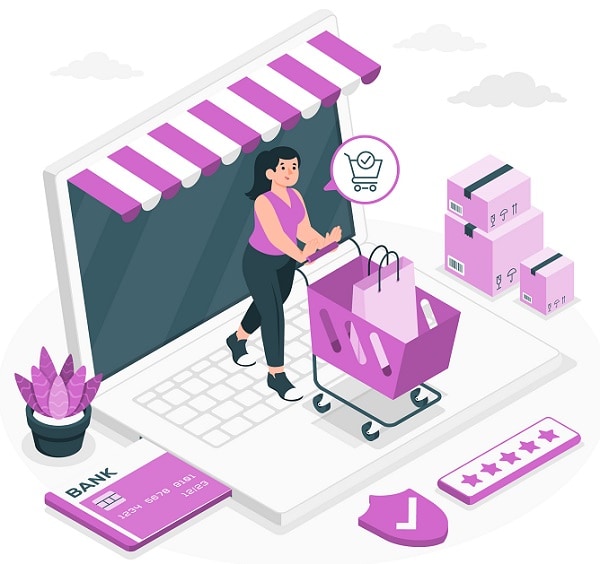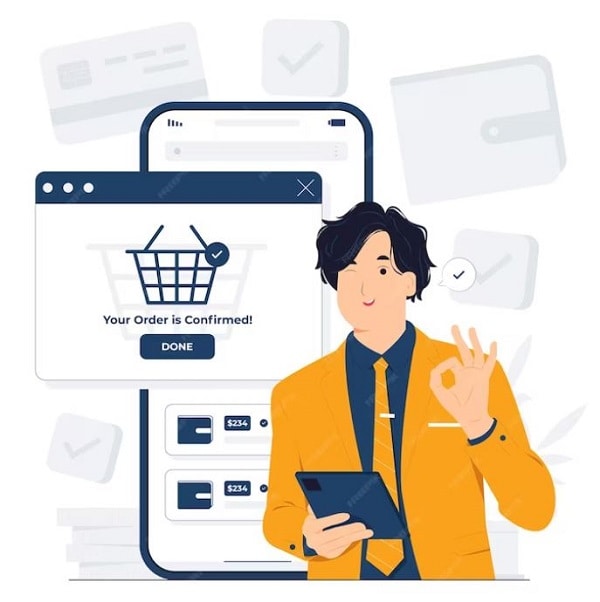The shopping landscape has drastically changed. Thanks to online platforms that make buying goods as easy as a few phone taps, more and more customers and businesses prefer shopping and selling online.
Now that the world is all about e-commerce, small business owners see the benefit of exploring the different kinds of ecommerce business models and leveraging the digital world for maximum profit.
Let’s look at the different e-commerce business models to help you choose the right one for your online business venture.
Also read: 10+ Reasons to Start Your ECommerce Business Today
What is e-commerce business model?
An e-commerce business model refers to the structure and strategy that an online business adopts to facilitate the buying and selling of goods and services — including how they generate revenue, interact with customers and deliver value.
Different e-commerce business models exist, each with its unique characteristics, revenue streams, and target audiences.
6 types of e-commerce business models
1. B2C (Business-to-Consumer)
B2C e-commerce is when a company sells its products or services directly to end-users or customers. This is mostly seen when customers buy from Shopee and Lazada shops, Instagram shops, TikTok shops, or any other online selling platform.
Through these apps or marketplaces, businesses can directly market their products to their target audiences and complete a B2C transaction.

e-commerce.
2. B2B (Business-to-Business)
This is when entrepreneurs talk to other businesses — from one company to another. In the B2B business model, there are two methods:
- Vertical: businesses sell their products to brands and names in the same industry
- Horizontal: markets products across different industries
In the Philippines, we can best see the B2B model in BeautyMNL and Metrodeal wherein multiple brands come to the app to sell their products to their customers.
3. C2C (Consumer-to-Consumer)
The C2C e-commerce model is the exchange between a consumer to another consumer. They would use e-commerce platforms as a medium between them.
A good example of this is when a Carousell user posts pre-loved products for sale on the app and another member buys that item. Another example of this business model is Facebook Marketplace, where anybody who uses the app can put up a product online, and anyone in that same online space can purchase it.

4. C2B (Consumer-to-Business)
For the C2B model, the conventional way is reversed. This business model enables consumers to sell their products or services to brands or businesses.
A better way to understand this is by looking at the process of Upwork or Fiverr. Individuals or freelancers offer their services to brands or businesses, and these websites serve as a medium for the transaction to happen.
5. D2C (Direct-to-Consumer)
D2C is essentially when direct manufacturers sell their products or services to customers. It’s when they bypass traditional retail channels and users can directly purchase from these manufacturers.
In the Philippines, D2C also happens in Shopee, Lazada, Facebook Marketplace and other online platforms that allow manufacturers to sell their products.
6. B2B2C (Business-to-Business-to-Consumer)
B2B2C requires a close partnership between two businesses to sell products or services to the end-consumers. A great example of this is affiliate marketing or resellers that act as an intermediary to direct sellers to reach more customers.
Choosing your e-commerce business model
So what model do you think would work best for your enterprise?
Choosing the right e-commerce business model requires an assessment of different factors that are unique to every business need. Some of those factors include:
- Product. Take into consideration what you’re selling. Note the market demand and how it will address your customer’s needs. You can do this by prioritizing market research to see where you can stand out in your industry.
- Target market.Next is to identify who your product or service is really for. This is crucial to identify the right e-commerce business model for you as this will dictate your strategy and business structure.
- Capabilities and resources. At the start of your business, it’s important to assess where you are in terms of your material and logistical capabilities. You need to maximize your initial investment to fully support your chosen business model.
For example, targeting customers means that your marketing strategies are more related to human experiences, emotions, and needs while targeting businesses is more focused on product expertise and standing out in the field.

- Sales channels. What would be the most effective channel to reach your desired market? These channels could be a website, e-commerce platform or social media. You may even get into multi-channel if your resources permit you to do so and increase your visibility.
- Brand positioning. Your brand messaging and positioning say a lot about what your strategy will be. Answer questions like who you will be talking to and what it is that you want to say. You’ll get a clearer picture of your brand identity that will then reflect on your strategy as an online business.
- Scalability and flexibility: With all that considered, you also have to think ahead and identify the future scalability and flexibility of your chosen e-commerce model. This means anticipating future growth and expansion, and being open to adapting to different market trends and ever-changing customer preferences.
Check out these Effective Strategies for Scaling a Business.
Grow your e-commerce business with Ninja Van
In the fast-paced and ever-changing world of e-commerce, choosing the right business model will guide you to sustainable growth and competitive advantage on the market.

Along with the right business model, choosing your logistics partner is also crucial. Optimize and streamline your e-commerce with Ninja Van’s full-suite solution — from supply chain management to fulfillment to last-mile delivery.
No need to deal with different providers. Choosing a one-stop logistics partner to outsource your processes will give you a cost-effective way to expand or scale your business faster.
Discover how Ninja Van can optimize your business for growth!
More tips to boost your e-commerce:
6 Signs You Need to Outsource Your Order Fulfillment
Best Practices for Ecommerce Sellers
Effective Pricing Tactics for Your Online Business






